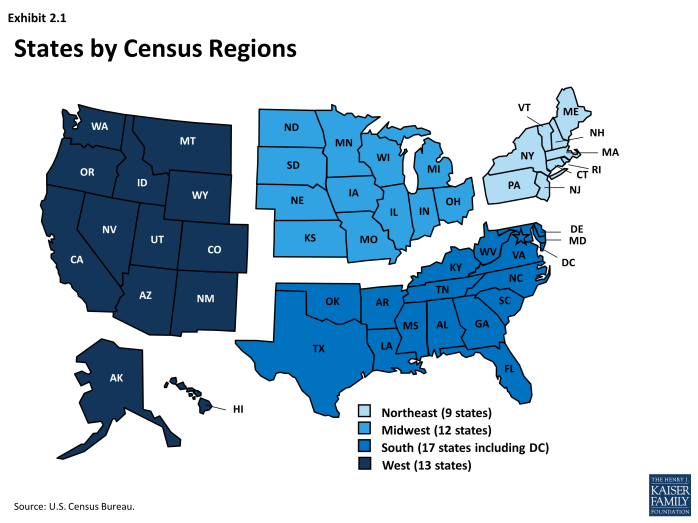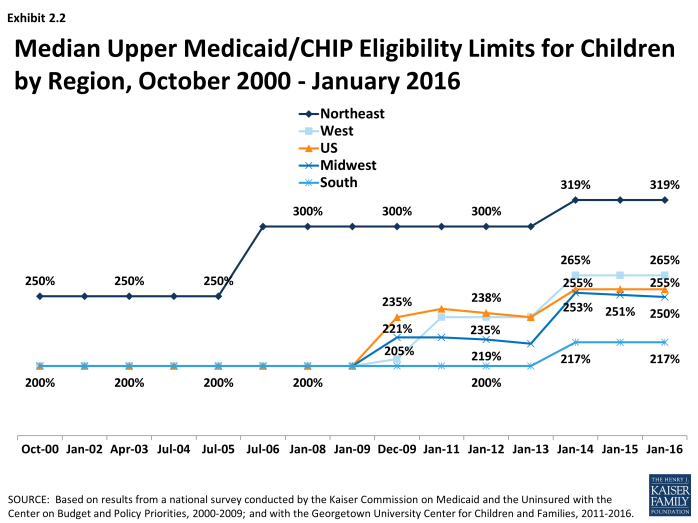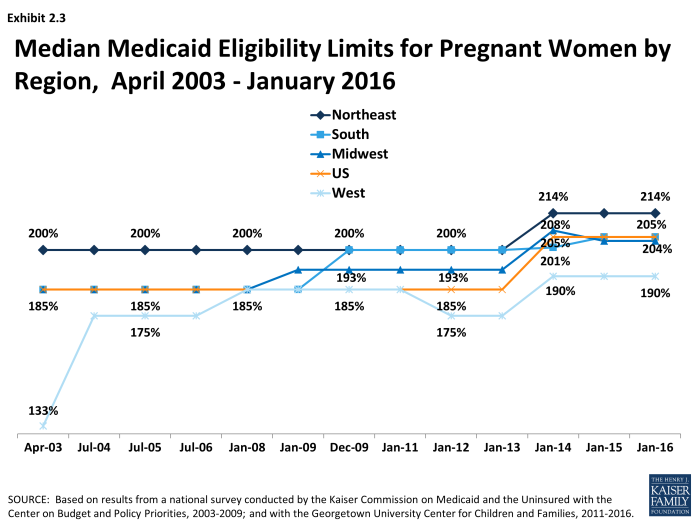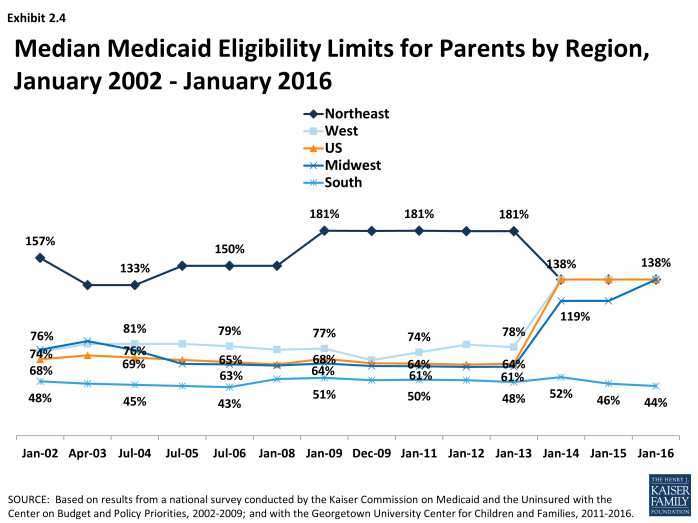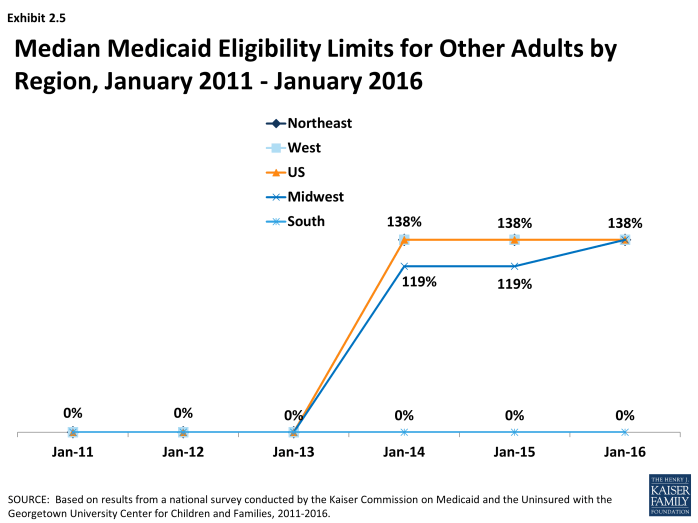Trends in Medicaid and CHIP Eligibility Over Time
Section 2: Eligibility Trends by Geographic Region
This section examines trends in eligibility by U.S. Census region, including the Northeast, South, Midwest, and West (Exhibit 2.1). Across eligibility groups, the Northeast generally has had the highest median eligibility limits over time. The South has had the lowest median eligibility limits for all groups, except pregnant women, for whom the West has the lowest median eligibility limits. Over the study period, the gap between the region with the highest median eligibility limit and the region with the lowest median eligibility increased for children. Similarly, the gap between the region with the highest and lowest median limit widened for other adults when the Medicaid expansion took effect as of January 2014. In contrast, this gap between the highest and lowest regions has narrowed for parents and pregnant women over time.
Children. Between 2000 and 2016, median eligibility limits for children increased in all regions, but the increase in the South only reflects the conversion to MAGI-based thresholds beginning as of January 2014 (Exhibit 2.2). Increases were largest and occurred earliest in the Northeast. Median limits in the West also increased over the period, rising above the U.S. median. Smaller increases occurred in the Midwest, which remains below the U.S. median as of 2016.
Pregnant women. Median eligibility limits for pregnant women increased in all regions between 2003 and 2016 (Exhibit 2.3). The largest increase occurred in the West, although the median limit for the region still remains below the U.S. median as of 2015.
Parents. Changes in median eligibility limits for parents between 2002 and 2016 varied across the regions (Exhibit 2.4). In the Midwest and West, median eligibility limits for parents significantly increased as of 2014 due to the Medicaid expansion. In the Northeast, the median decreased from 157% FPL to 138% FPL, reflecting Medicaid eligibility reductions in several states when parents above 138% FPL became eligible for new Marketplace coverage options as of 2014. In the South, the median eligibility limit remained relatively stable and low, at around half the poverty level, since most states in the region did not adopt the Medicaid expansion.
Other adults. Median eligibility limits for other adults substantially increased between 2011 and 2016 in all regions except the South (Exhibit 2.5). In the Northeast, Midwest, and West, the median limit increased from 0% FPL to 138% FPL, reflecting adoption of the Medicaid expansion in most states in these regions. In the South, the median eligibility limit remains at 0% FPL since most states in the region have not adopted the expansion as of January 2016.

